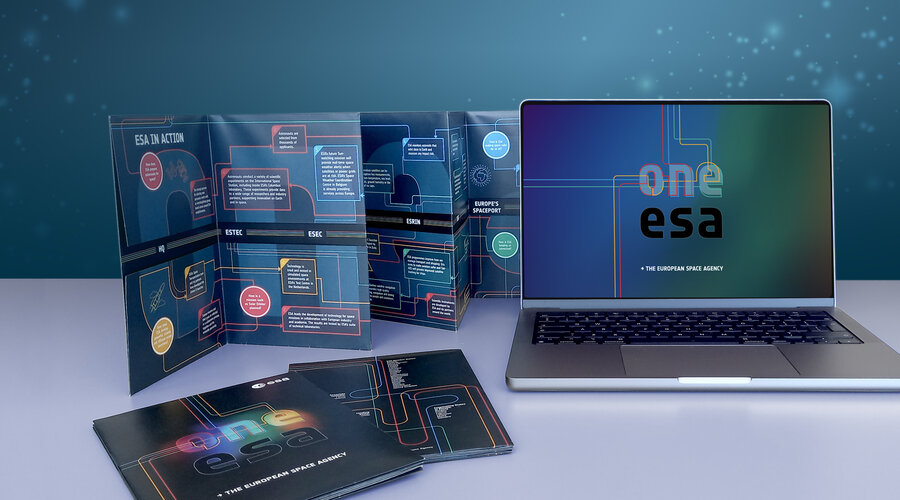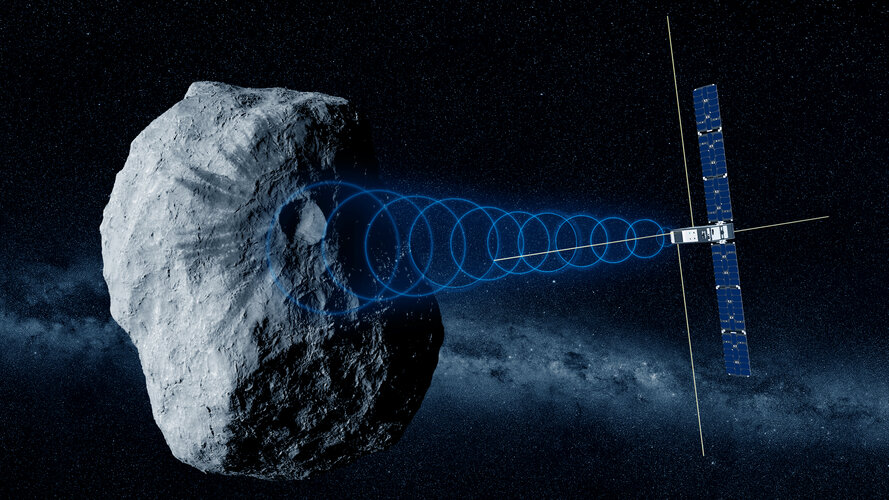Firefly Aerospace and Xtenti collaborate to conduct responsive space tests for NRO
Thursday, 10 August 2023 10:08 Firefly Aerospace, Inc., an end-to-end space transportation company, has announced a new agreement with Xtenti, LLC, an innovative space logistics company, to conduct a responsive space mission with Firefly's orbital vehicle, Elytra, and Xtenti's small satellite dispenser, FANTM-RiDE.
Scheduled to launch in 2024, the mission supports Xtenti's follow-on study contract with the National Reco
Firefly Aerospace, Inc., an end-to-end space transportation company, has announced a new agreement with Xtenti, LLC, an innovative space logistics company, to conduct a responsive space mission with Firefly's orbital vehicle, Elytra, and Xtenti's small satellite dispenser, FANTM-RiDE.
Scheduled to launch in 2024, the mission supports Xtenti's follow-on study contract with the National Reco Looking for Light with New Horizons
Thursday, 10 August 2023 10:08 The galaxy stretches out in front of us. The solar system is behind us. We have traveled over 5 billion miles from the home we departed forever 17 years ago. We threaded our way through the moons of Jupiter, skimmed the frozen seas of Pluto, and buzzed Arrokoth, a fossilized remnant of the ancient solar nebula that created the Sun and the Earth. The space ahead is unknown.
We are now nearl
The galaxy stretches out in front of us. The solar system is behind us. We have traveled over 5 billion miles from the home we departed forever 17 years ago. We threaded our way through the moons of Jupiter, skimmed the frozen seas of Pluto, and buzzed Arrokoth, a fossilized remnant of the ancient solar nebula that created the Sun and the Earth. The space ahead is unknown.
We are now nearl Chemical contamination on International Space Station is out of this world
Thursday, 10 August 2023 10:08 Concentrations of potentially harmful chemical compounds in dust collected from air filtration systems on the International Space Station (ISS) exceed those found in floor dust from many American homes, a new study reveals.
In the first study of its kind, scientists analysed a sample of dust from air filters within the ISS and found levels of organic contaminants which were higher than the
Concentrations of potentially harmful chemical compounds in dust collected from air filtration systems on the International Space Station (ISS) exceed those found in floor dust from many American homes, a new study reveals.
In the first study of its kind, scientists analysed a sample of dust from air filters within the ISS and found levels of organic contaminants which were higher than the Lockheed Martin completes CDR for Tranche 1 Transport Layer Satellites
Thursday, 10 August 2023 10:08 Lockheed Martin (NYSE: LMT) and the Space Development Agency (SDA) successfully completed the Critical Design Review (CDR) for SDA's Tranche 1 Transport Layer (T1TL) program. The integrated system review validated that Lockheed Martin's T1TL ground and space designs meet all mission requirements and can proceed to production.
The initial warfighting capability of the SDA's Proliferated War
Lockheed Martin (NYSE: LMT) and the Space Development Agency (SDA) successfully completed the Critical Design Review (CDR) for SDA's Tranche 1 Transport Layer (T1TL) program. The integrated system review validated that Lockheed Martin's T1TL ground and space designs meet all mission requirements and can proceed to production.
The initial warfighting capability of the SDA's Proliferated War Northrop Grumman achieves key milestone in Arctic Satellite Broadband Mission
Thursday, 10 August 2023 10:08 Northrop Grumman Corporation (NYSE: NOC) has delivered two major components of the Arctic Satellite Broadband Mission (ASBM) and has started the next phase of pre-launch preparations. This two-satellite constellation will deliver protected satellite communications to the Northern polar region - one of the most difficult locations on earth to deliver communications.
The most recent accompli
Northrop Grumman Corporation (NYSE: NOC) has delivered two major components of the Arctic Satellite Broadband Mission (ASBM) and has started the next phase of pre-launch preparations. This two-satellite constellation will deliver protected satellite communications to the Northern polar region - one of the most difficult locations on earth to deliver communications.
The most recent accompli RIKEN, Mitsui Bussan and NanoAvionics team up for NinjaSat X-ray Observatory
Thursday, 10 August 2023 10:08 RIKEN, Japan's largest comprehensive research institution, Mitsui Bussan Aerospace, and mission integrator Kongsberg NanoAvionics (NanoAvionics) have announced their collaboration on the astronomical NinjaSat1 X-ray observatory mission. The aim of this two-year mission in a low Earth orbit (LEO) is to observe X-ray photons from bright X-ray objects in the universe. The NinjaSat team aims to obse
RIKEN, Japan's largest comprehensive research institution, Mitsui Bussan Aerospace, and mission integrator Kongsberg NanoAvionics (NanoAvionics) have announced their collaboration on the astronomical NinjaSat1 X-ray observatory mission. The aim of this two-year mission in a low Earth orbit (LEO) is to observe X-ray photons from bright X-ray objects in the universe. The NinjaSat team aims to obse Scout Space, Stanford University win Space Force contract extension
Thursday, 10 August 2023 09:00
Scout won a $1.5 million contract to help the U.S. Space Force to characterize spacecraft and debris objects.
Take a journey around ESA’s sites
Thursday, 10 August 2023 09:00
Take a journey around ESA’s sites
One ESA: a journey through Europe's space program
Chinese startup launches 7th Ceres-1 rocket, preps for first sea launch
Thursday, 10 August 2023 07:50
Galactic Energy achieved its seventh launch success from seven attempts early Thursday and is now set for a first sea-based mission.
Hera’s mini-radar will probe asteroid’s heart
Thursday, 10 August 2023 06:48
The smallest radar to fly in space has been delivered to ESA for integration aboard the miniature Juventas CubeSat, part of ESA’s Hera mission for planetary defence. The radar will perform the first radar imaging of an asteroid, peering deep beneath the surface of Dimorphos – the Great Pyramid-sized body whose orbit was shifted last year by the impact of NASA’s DART spacecraft.
Download your Thursday ‘News from the 2023 Small Satellite show’ digital edition
Thursday, 10 August 2023 05:16
The SpaceNews editorial team is producing a daily for the 2023 Small Satellite show, a nightly email newsletter and all-day web coverage during the 2023 Small Satellite show in Logan, Utah, the […]
Viasat not ready to declare Viasat-3 Americas a total loss
Thursday, 10 August 2023 01:08
Viasat is holding off on a contingency plan for ViaSat-3 Americas in the hope it could still get some capacity from the broadband satellite despite its defective antenna, the operator’s chair and CEO Mark Dankberg said Aug.
Japan’s Interstellar aims for orbital launch in 2025
Wednesday, 09 August 2023 21:06
Japanese launch startup Interstellar Technologies is preparing for a static fire test later this year that could pave the way for orbital launch of its Zero rocket in 2025.
U.S. intelligence agencies take steps to protect commercial satellites
Wednesday, 09 August 2023 21:05
The National Reconnaissance Office, the National Geospatial-Intelligence Agency and U.S. Space Command last month signed an agreement to improve threat intelligence sharing with commercial satellite operators.
Lynk Global starts initial direct-to-device services in the Cook Islands
Wednesday, 09 August 2023 20:11
Small satellite operator Lynk Global has started initial direct-to-device services in a small part of the Cook Islands in its second commercial launch with a local telco.

